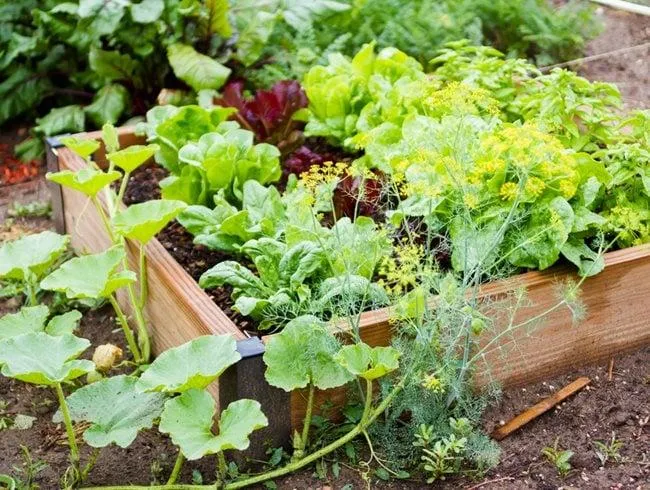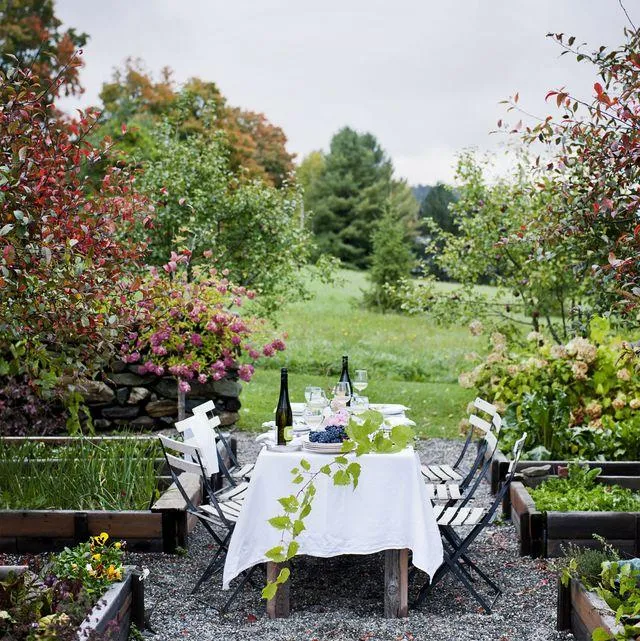Your Guide to Growing Tiny Indoor Plants
Are you looking to add some greenery to your home but don’t have a lot of space? Tiny plants are perfect for growing indoors, even if you only have a small apartment or office desk. In this article, I’ll cover all the basics of getting started with small indoor plants that are easy to care for.
Choosing the Right Plants
- Succulents – Succulents like jade, aloe, and echeveria are extremely easy to care for. They store water in their leaves so they only need water every 1-2 weeks. They come in many colors and shapes and can thrive in low light.
- Pothos – With heart shaped leaves and long trailing vines, pothos are one of the lowest maintenance plants you can find. They’re happy with infrequent watering and thrive in low to medium light conditions.
- Snake plant – Snake plants are tough as nails and virtually impossible to kill. They remove toxins from the air and only need water every 2-3 weeks. They grow well in low light situations.
- Peperomia – Peperomias come in a beautiful variety of leaf shapes and colors. They enjoy bright,indirect light and moderate watering. They’re great for tabletops or bookshelves.
- Chinese evergreen – Chinese evergreens have beautifully patterned leaves that come in red, green,and variegated colors. They grow well in low to medium light with moderate watering.
From my experience, succulents and pothos are great starter plants since they’re extremely forgiving. Snake plants and Chinese evergreens are also terrific for low maintenance care. Peperomias add colorful variety. All will thrive in typical indoor conditions.
Find the Right Spot
When choosing a spot in your home, evaluate the light levels. Most small indoor plants do best in low to medium, indirect sunlight. Direct southern or western sun may be too strong and cause leaf burn. Make sure to rotate plants occasionally so all sides receive light. If your home only has low light areas, no problem – many of the plants mentioned above are excellent for shadier spots.
Also consider ventilation – plants still need fresh air circulating around them. Avoid placing them near drafty windows or vents. And don’t forget about pets – keep plants up high or behind closed doors if you have curious cats or dogs. A spot near a kitchen or bathroom also works well since the ambient humidity is higher there.
Caring for Your Tiny Plants
Watering is key to keeping small indoor plants happy. For succulents and snake plants, water only when the soil is dry 1-2 inches deep, about every 1-3 weeks depending on conditions. Pothos, peperomias, and Chinese evergreens enjoy moister soil and should be watered just before the top inch dries out, around once per week. Use room temperature water and alwaysdrain excess from the saucer.
Fertilizing boosts plant growth in the growing seasons of spring and summer. Dilute liquid or water soluble fertilizer to half or quarter strength and apply monthly. Skip fertilizing in fall and winter when plants are less active.
Repotting is vital for rootbound plants. Check the root ball occasionally – if it’s filled the container, it’s time for a slightly larger pot. Use a well-draining potting mix suitable for indoor plants. Repot in spring when new growth starts.

Cleaning means wiping down leaves with a damp cloth to remove dust. Prune off any dead or diseased plant material. Some,like snake plants, may need a light trim now and then to keep a dense growth habit.
With just a bit of care following these guidelines, your tiny indoor plants will thrive! Let me know if you have any other specific questions.
Dealing with Pests and Problems
No matter how well you care for indoor plants, occasional issues may arise. Here are some common pests and problems small houseplants face and how to identify and treat them:
Mealybugs – Fluffy white bugs that suck plant sap. Wipe off with cotton balls dipped in rubbing alcohol. Isolate infected plants.
Spider mites – Tiny spider-like bugs that weave fine webs. Leaves become stipled or yellowed. Spray plant thoroughly with water to dislodge mites or use neem oil spray.
Scale – Hard, brown bumps that secrete sticky honeydew. Gently scrape off with cotton swab dipped in rubbing alcohol.
Root rot – Caused by overwatering. Leaves yellow/drop. Roots turn mushy/brown. Remove plant from soggy soil, pruning dead parts. Allow to dry before reporting in fresh soil.

Leaf drop – Leaves falling for no apparent reason could mean the plant needs more light, humidity, or it may be going dormant. Check conditions and be patient.
With care and observation, most minor plant problems can be fixed without heavy chemical treatments. Don’t give up – just make adjustments and the little guys will bounce back! Let me know if any specific problem persists.
Taking Cuttings and Propagation
One of the amazing things about plants is their ability to propagate and grow more of themselves. You can expand your indoor jungle and share with friends through simple cuttings or dividing plants. Here are a few tips:
Pothos, spider plants and tradescantia are very easy to root from stem cuttings in water. Use clean, sharp scissors to take 4-6 inch cuttings under a node. Remove lower leaves and place stem in water. Roots will form within 2-4 weeks. You’ll know it’s ready to pot when roots are several inches long.
Some plants like peperomias, sansiverias and philodendrons can be divided. Gently tease or cut apart young offset plantlets from the mother plant. Allow cuts to callus before potting. Mist soil to prevent drying out as new roots form.
Consider starting seeds if your tiny plant has them. Read instructions first as some need light or heat to germinate. Keep soil lightly moist with a plastic cover. Seeds of herbs and flowers are very rewarding!
Have fun experimenting with propagation. It’s interesting to see new growth develop and creates inexpensive plant babies to share. Let me know if you need help with anything specific.

I hope this detailed guide has answered all your questions about growing tiny plants indoors! Starting small houseplants is an enjoyable and relaxing hobby. With just a little care, you’ll be thriving in no time. Feel free to reach out if you have any other questions as your collection expands. Happy planting!
Plants That Thrive Indoors
| Plant | Size | Light Needs | Care Level |
|---|---|---|---|
| Pothos | Small to Medium | Low | Low |
| Snake Plant | Medium to Large | Low | Low |
| ZZ Plant | Medium | Low | Low |
| Peperomia | Small | Medium | Low |
| Chinese Evergreens | Small to Medium | Medium | Low |
FAQ
-
What are some easy tiny plants to grow indoors?
Some basic tiny plants that don’t require much care include succulents, spider plants, pothos, peace lilies, and mini philodendrons. Succulents like jade and aloe vera can survive with just sunshine by a window. Spider plants are quite sturdy kind of plants that can hang from pots. Basically, any plant with broad leaves is a safe choice.
-
How do you take care of small indoor plants?
Little indoor plants need water, light, and occasional fertilizer to stay green and healthy. Water them when the soil becomes dry to the touch, which is roughly once every 7-10 days. Place them in a spot with bright, indirect sunlight for a few hours daily. You can sprinkle some plant fertilizer in spring and summer. Neglecting their needs will cause awesome plants to whither away!
-
Are some tiny plants more low-maintenance than others?
Indeed, some petite plants demand less care than others. Succulents and snake plants can tolerate lengthy periods without water. Pothos and philodendrons seems to survive just about anything – your grandma may claim hers is decades old! Peace lilies signal thirst with droopy leaves. Spider plants grow babies in air for more plant friends. So study your mini plant pals’ wants to care for them with ease.
-
How small of a space do small indoor plant need?
Tiny indoor plants can thrive in very small spaces. Many only reach 6-12 inches tall and wide as adults. Fish bowl terrariums or bottle gardens are suitable homes. However, plants may outgrow their digs over time, especially if pruned regularly. It depends on the species. Low light succulents could survive on a windowsill. Others prefer a bit more generous conditions. Just keep an eye out for crowding as your little leafy pals grow.
-
Can tiny plants add drama to a small space?
You bet! Even a single miniature plant will contribute activity and style to a desk or shelf. Their foliage adds texture and color to Plain Jane areas. Pot them in unusual containers for visual pop too. The greenery acts as a natural air cleanser and mood booster. Some petite plants produce sweet smells as well. At the same time, a fussy fake plant gives little payoff in contrast. Thanks to their small stature, actual live plants breathe real vibrancy into tiny territories. Their very presence is enchanting!
Are any small indoor plants toxic to pets or kids?
You’ve got to be careful regarding toxicity with tiny tykes or furry friends underfoot. Some popular petite plants pose dangers if nibbled. For instance, lilies, mistletoe and aloe could make a dog or cat ill. Tulips and narcissus bulbs also pose a risk. Peace lilies contain calcium oxalate crystals that cause burning and swelling in mouths. Perhaps display these out of reach. Philodendrons, pothos, english ivy and spider plants are usually safe plant picks for households with toddlers or four-legged pals though. Just use prudent precautions.

What if a small indoor plant isn’t thriving?
Worries that your tiny plant buddy isn’t doing well are reasonable. But is it worth chucking out just yet? First, check sunlight, water and drainage. Moving or prune it may help. Or check for bugs feasting on leaves. Fertilizing once revitalizes some lackluster plants. Last ditch, surrender and try another – some species simply don’t suit certain conditions. The secret is finding just the right lightweight houseplants to florish in your setup. With some fine-tuning, more may stay lush and leafy friends for long!
